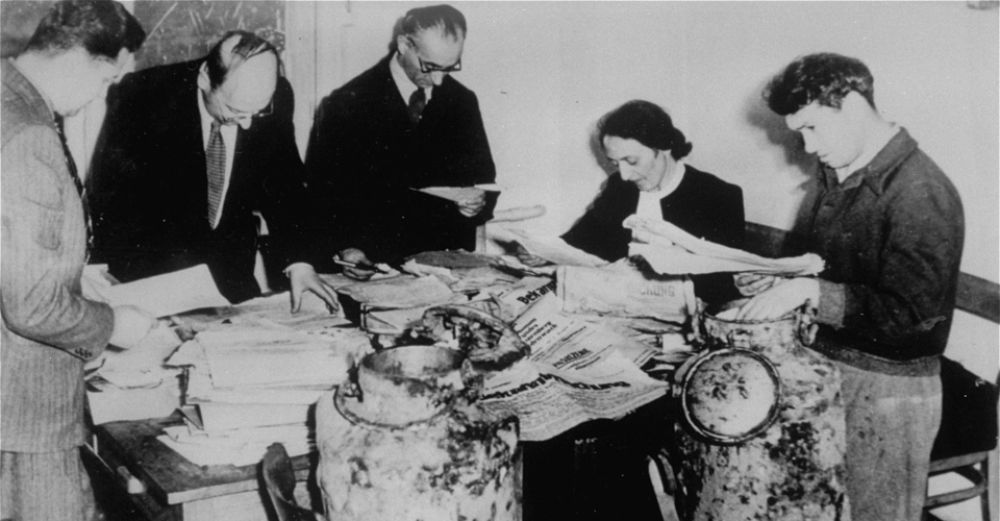- News
- Events
- Oneg Shabbat
- Collections
- Research
- Exhibitions
- Education
- Publishing Department
- Genealogy
- About the Institute
- Bookstore


1st December, 1950 marks the discovery of the second part of the Ringelblum Archive, which was put into two metal milk-cans. It is not known why it was discovered not earlier than four years after the excavation of the first part as both of them were hidden in the cellars of the same building at 68 Nowolipki Street, a typical Warsaw building with a narrow courtyard, where in the former ghetto, till 1942 had operated a conspiratorial the Bera Borochowa School, whose teachers cooperated with „Oyneg Shabbos”, in other words the Archive.
In 1947, the Central Jewish Historical Commission undertook efforts to make further search for the Archive’s materials, but as far as we know, they were made in 1949 only at 34 Świętojerska Street (but that’s another story). Compared to the documents found earlier, which had been stuffed in tow metal cases, and as a result were wet and often mouldy, those hidden in sealed cans survived in excellent condition. They include a total of nearly 8000 pages and cards (the first part consists of almost 21,000 of them).
We do not know for sure when the second part of the Ringelblum Archive was hidden; only by analysing the dates of its documents we can assume that it took place in February 1943. It is likely that Emanuel Ringelblum hid it together with Izrael Lichtensztajn, who officially at the time were employees of the so-called Hallmann’s szop (a company working for the Wehrmacht), which since September 1942 comprised the area of the former school.
According to a story told for years, the cans with the second part of the Archive were found accidentally during road works in Nowolipki. Whether we will ever be able to learn more details about it, only arduous research will tell. Meanwhile, while working on the materials of the Archive for our complete edition, we wonder, why some of them were placed in the second part and not the first; maybe there was no time to hide them then, and maybe later there was no time to hide a lot of other documents...
On the permanent exhibition „What we were unable to shout out to the world” we present to the public – for the first time – documents collected by the secret group Oneg Shabbat. The exhibition is one of the key elements of the Oneg Szabat program.